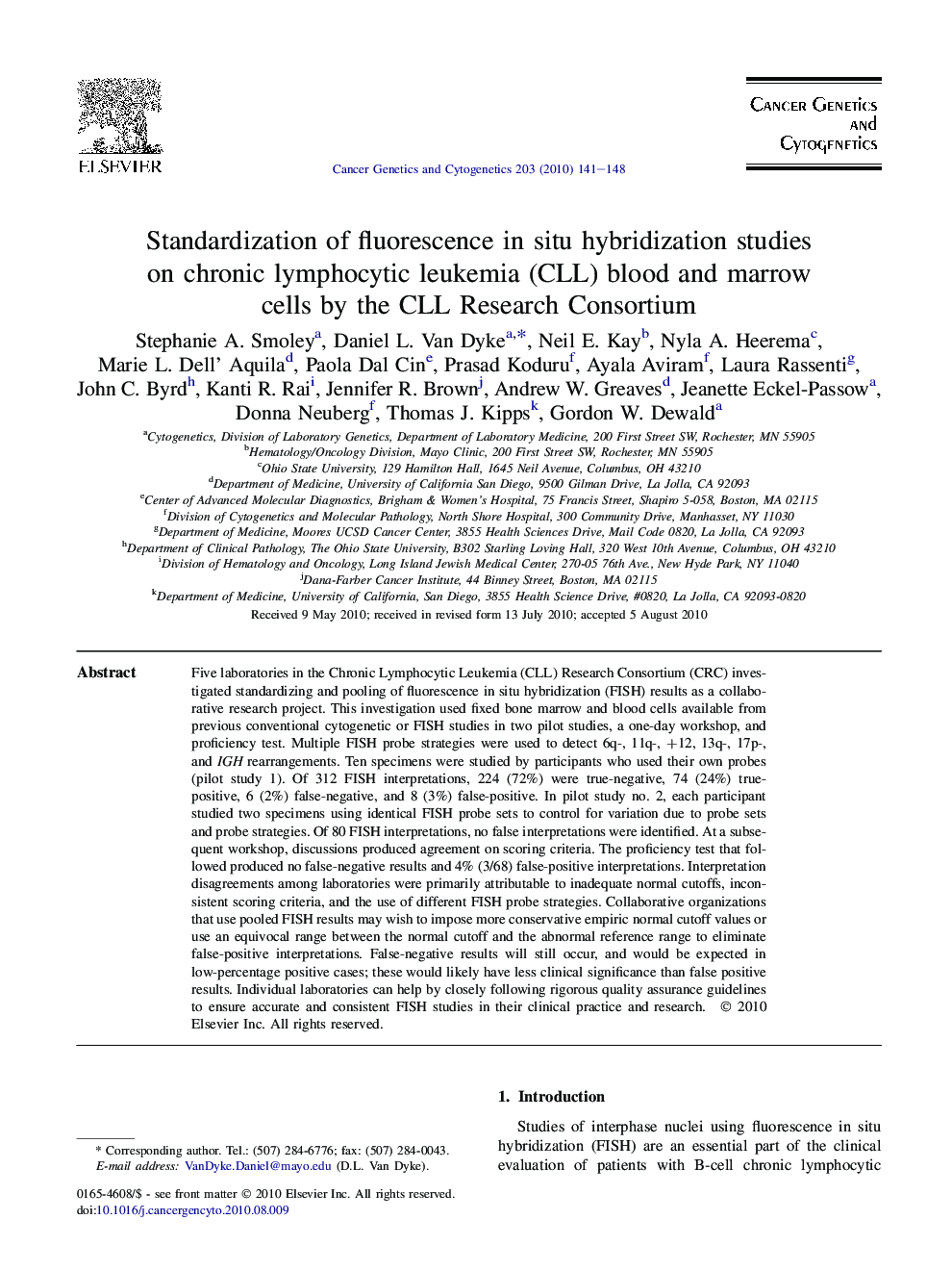| کد مقاله | کد نشریه | سال انتشار | مقاله انگلیسی | نسخه تمام متن |
|---|---|---|---|---|
| 2110549 | 1546574 | 2010 | 8 صفحه PDF | دانلود رایگان |

Five laboratories in the Chronic Lymphocytic Leukemia (CLL) Research Consortium (CRC) investigated standardizing and pooling of fluorescence in situ hybridization (FISH) results as a collaborative research project. This investigation used fixed bone marrow and blood cells available from previous conventional cytogenetic or FISH studies in two pilot studies, a one-day workshop, and proficiency test. Multiple FISH probe strategies were used to detect 6q-, 11q-, +12, 13q-, 17p-, and IGH rearrangements. Ten specimens were studied by participants who used their own probes (pilot study 1). Of 312 FISH interpretations, 224 (72%) were true-negative, 74 (24%) true-positive, 6 (2%) false-negative, and 8 (3%) false-positive. In pilot study no. 2, each participant studied two specimens using identical FISH probe sets to control for variation due to probe sets and probe strategies. Of 80 FISH interpretations, no false interpretations were identified. At a subsequent workshop, discussions produced agreement on scoring criteria. The proficiency test that followed produced no false-negative results and 4% (3/68) false-positive interpretations. Interpretation disagreements among laboratories were primarily attributable to inadequate normal cutoffs, inconsistent scoring criteria, and the use of different FISH probe strategies. Collaborative organizations that use pooled FISH results may wish to impose more conservative empiric normal cutoff values or use an equivocal range between the normal cutoff and the abnormal reference range to eliminate false-positive interpretations. False-negative results will still occur, and would be expected in low-percentage positive cases; these would likely have less clinical significance than false positive results. Individual laboratories can help by closely following rigorous quality assurance guidelines to ensure accurate and consistent FISH studies in their clinical practice and research.
Journal: Cancer Genetics and Cytogenetics - Volume 203, Issue 2, December 2010, Pages 141–148